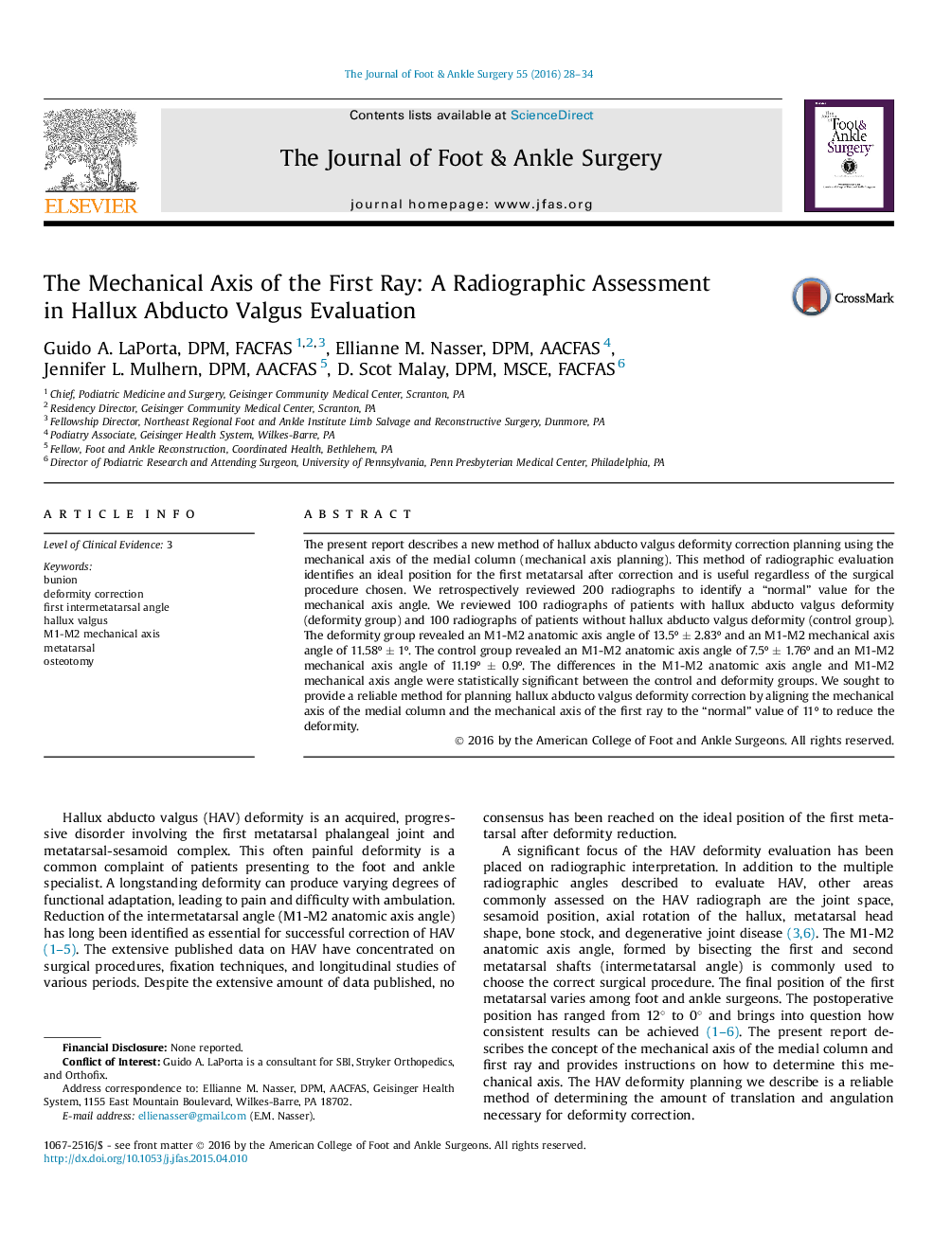| Article ID | Journal | Published Year | Pages | File Type |
|---|---|---|---|---|
| 2719295 | The Journal of Foot and Ankle Surgery | 2016 | 7 Pages |
The present report describes a new method of hallux abducto valgus deformity correction planning using the mechanical axis of the medial column (mechanical axis planning). This method of radiographic evaluation identifies an ideal position for the first metatarsal after correction and is useful regardless of the surgical procedure chosen. We retrospectively reviewed 200 radiographs to identify a “normal” value for the mechanical axis angle. We reviewed 100 radiographs of patients with hallux abducto valgus deformity (deformity group) and 100 radiographs of patients without hallux abducto valgus deformity (control group). The deformity group revealed an M1-M2 anatomic axis angle of 13.5⁰ ± 2.83⁰ and an M1-M2 mechanical axis angle of 11.58⁰ ± 1⁰. The control group revealed an M1-M2 anatomic axis angle of 7.5⁰ ± 1.76⁰ and an M1-M2 mechanical axis angle of 11.19⁰ ± 0.9⁰. The differences in the M1-M2 anatomic axis angle and M1-M2 mechanical axis angle were statistically significant between the control and deformity groups. We sought to provide a reliable method for planning hallux abducto valgus deformity correction by aligning the mechanical axis of the medial column and the mechanical axis of the first ray to the “normal” value of 11⁰ to reduce the deformity.
